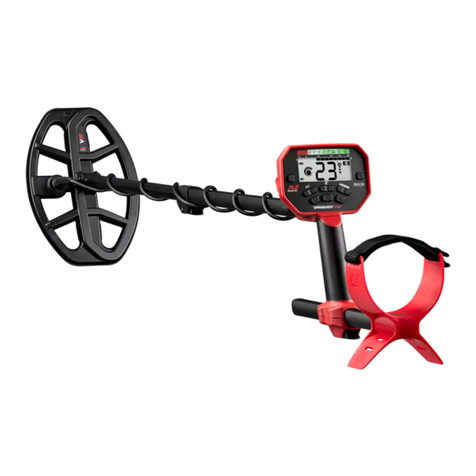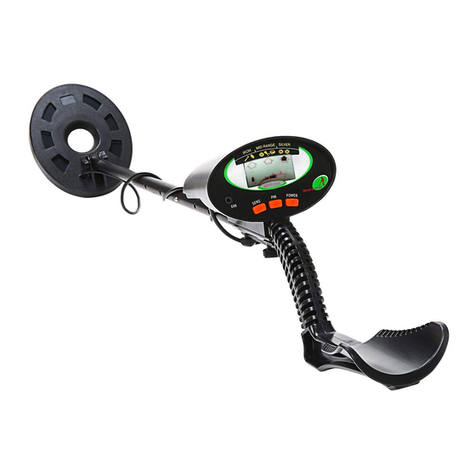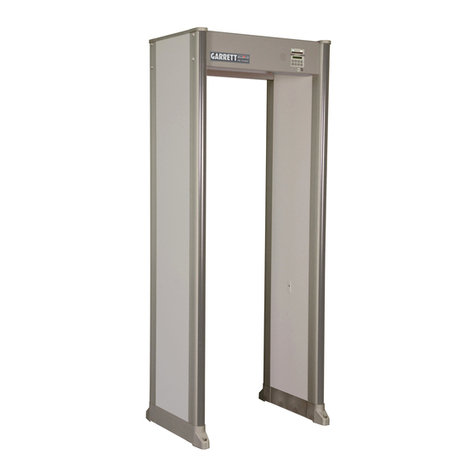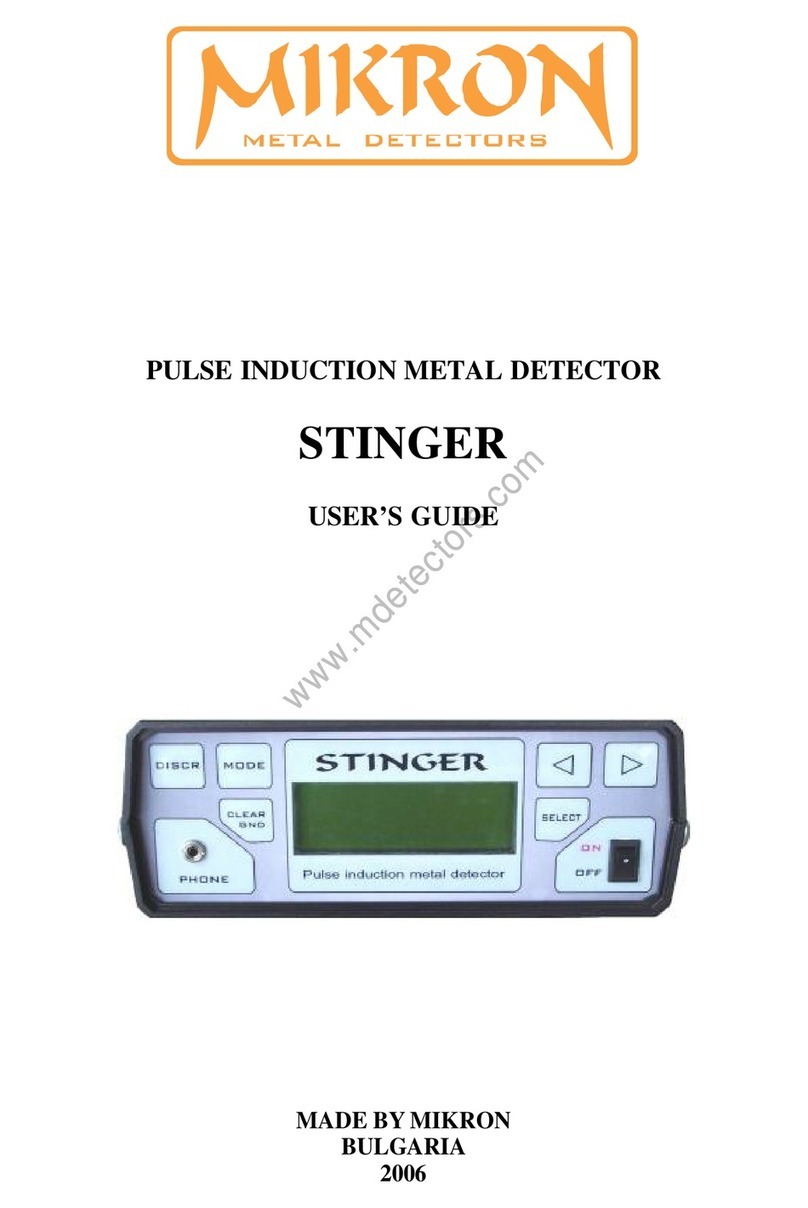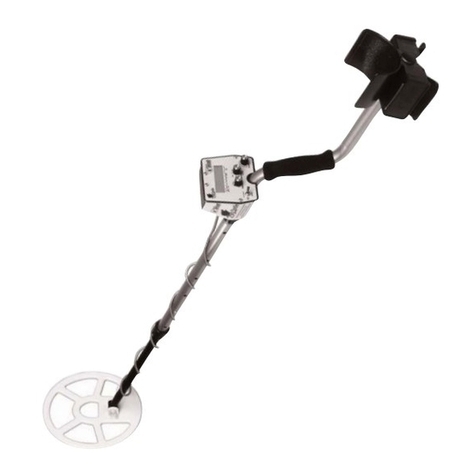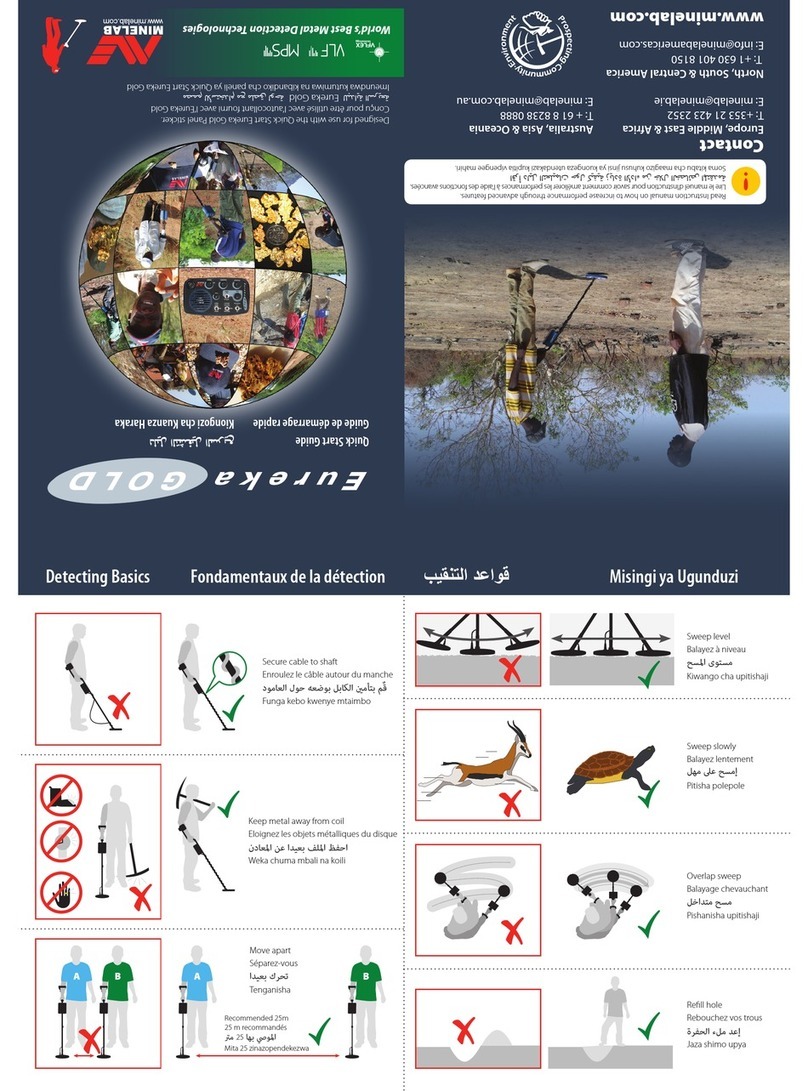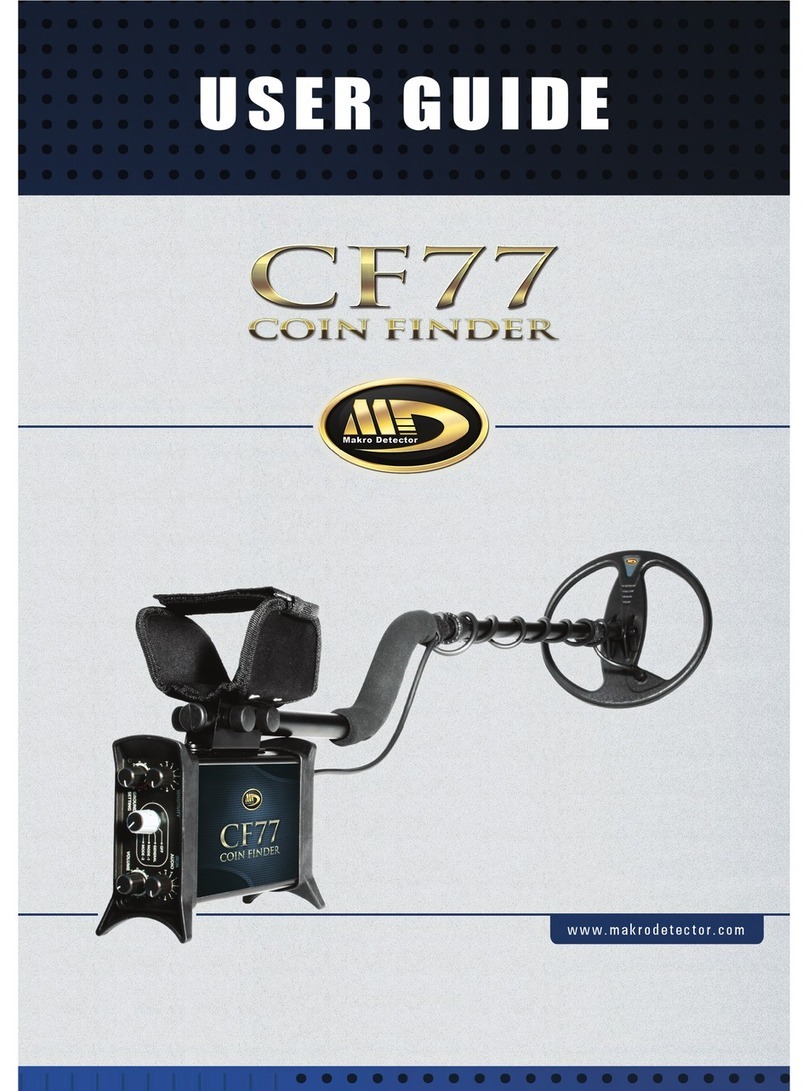Discovery Kids TDK28 User manual

Please retain the information on this manual
for future reference.
Colour, designs and decorations may vary
from those shown in the photographs.
Printed in China.
Customer Services:
+44 (0)1702 208175
Item no. TDK28
© 2016 Discovery Communications LLC.
Discovery kids and the Discovery Kids logo are
trademarks of Discovery Communications,
LLC, used under license. All Rights Reserved.
discoverykids.com www.trendsuk.co.uk
Distributed by Trends UK Ltd,
Harwell Innovation Centre,
Curie Avenue, Harwell Oxford,
Didcot OX11 0QG. UK
Email: [email protected]
Requires 1 x 9V battery (not included).
The purpose of the crossed-out wheelie bin symbol is to
remind us that most electrical product and batteries
contain trace elements which could be harmful to our
environment and therefore our health. We must all be
careful to dispose of them responsibly in a specifically designated way
– either using a collection scheme or into the correctly labelled civic
amenity (NOT into general waste) – this will help your local authority to
arrange to recycle or dispose of them in the appropriate manner.
To be used under
the direct supervision
of an adult.
WARNING!
FLASHING
WHITE/BLUE
LED
INDICATOR
LIGHTS
SEARCH
FOR LOST
METAL
OBJECTS AND
TREASURES!
Inspired by
AGES
8+
Digital Metal Detector
Digital Metal Detector
Instruction Manual

2 3
Inspired by
Your new detector can be used to
find missing or lost coins, pieces of
jewellery and other metal objects.
The World Of Metal
Detecting
Insert one 9-volt alkaline battery in
the body of the metal detector. You
will need a Phillips head (+)
screwdriver to remove the battery
compartment cover. Attach the
battery to the battery compartment,
making sure that the (+) and (-)
terminals are properly identified.
Replace the battery compartment
cover and re-insert the screw. Do not
over-tighten.
Getting Started
Battery Instructions -
Adults Only!
This unit uses a 9-volt battery (not
included).
– Only adults should replace
batteries.
– Do not mix battery types or old
and new batteries.
– Do not use rechargeable batteries.
– Non-rechargeable batteries are
not to be recharged.
– Batteries are to be inserted with
the correct polarity.
– Do not short-circuit the supply
terminals.
– Remove exhausted batteries from
the metal detector.
– When metal detector is not in use,
remove batteries to prevent
possible leakage.
– Use only recommended or
equivalent battery types.
– Do not dispose of batteries in fire:
batteries may explode or leak.
IMPORTANT
INFORMATION -
Safe Battery Usage
Obey all laws. Check with and ask
permission from the property owner
before you do any detecting on
private property.
Do not trespass.
When you find a
metal object
you may have
to dig a small
hole to retrieve
it. Keep such
holes as small
as possible and
fill them in neatly
when you are finished.
Rules
Components
Handle
Locking Ring
Shaft
Body
On/Off/Volume
Control
Sensitivity
Control
Search Coil
Battery
Compartment
SEARCH
FOR LOST
METAL
OBJECTS AND
TREASURES!
LIGHT-
WEIGHT,
EASY TO
HANDLE

Make sure that the shaft, handle and
locking ring are separated. (Fig. 1).
Place the locking ring loosely on the
shaft. Insert the shaft into the handle
until it stops (Fig. 2).
Turn the locking ring anti-clockwise
until tight to lock the handle in
position (Fig. 3).
Assembly
4 5
Inspired by
Turn the VOLUME ADJUSTER KNOB
all the way clockwise until it stops.
Hold the metal detector so that the
SEARCH COIL is held up in the air,
away from any metal objects.
To help your metal detector work at its
very best you will need to follow a
procedure called CALIBRATION.
Please do the following:
Turn the SENSITIVITY knob all the way
counter-clockwise. It will make a loud
beeping noise. Then turn the knob
clockwise very slowly until the tone
stops. STOP TURNING the knob the
moment the beeping stops. This
position is the most sensitive detection
setting. You may want to repeat this
procedure a few times to ensure that
you have adjusted the metal detector
to its optimum, most sensitive
calibration setting.
Move the metal detector close to a
metal object and you will hear the
beeping tone. If you need to alter the
sound, use the VOLUME ADJUSTER
knob to reach a comfortable noise
level.
Now, swing the metal detector back
and forth while keeping the search
coil level about 2cm above the ground.
Move the search coil slowly. If you
move too fast you may miss an object.
A series of five white LED lights will
display in the shaft.
When the metal detector detects a
metal object, it will make a rapid
beeping noise, the LED lights will
change from white to blue, and they
will flash more quickly.
How To Use
1
2
3
FLASHING
WHITE/BLUE
LED
INDICATOR
LIGHTS
DOUBLE
DETECTOR
SEARCH
COIL
VOLUME
AND
SENSITIVITY
CONTROLS

You will probably find lots of bottle
caps, metal pull tabs, and foil wrap.
You should collect these and dispose
of them in the relevant recycling bins.
Do not be discouraged. Keep
searching and you will be sure to find
some rewarding objects.
6 7
Inspired by
RESPECT OTHERS!
Always ask permission from the property
owner before searching. Found objects are
usually the property of the landowner, unless
you come to a different agreement. It is a good
idea to check current local, regional or
national laws. If a find is of significant
monetary or historic value, you should report it
to local authorities, as ownership might
automatically revert to the government which
may pay a ‘finder’s fee’.
RESPECT THE ENVIRONMENT
and be thoughtful! It’s generally wise
to take an extra bag along for any
rubbish you dig up. It is good
practice to remove and properly
discard these findings instead of
burying them again. Do not leave
rubbish for other coin hunters
to find.
Metal detecting is usually forbidden
at historic sites and in most parks,
so please check before searching.
When recovering lost items, always
make the smallest hole possible and return
the ground surface to the way it was before
you started to dig.
Do not use a shovel to dig! Many coin hunters
use a small garden trowel and a flat-blade
screwdriver.
When searching in sand, you will find it easier
to use a scoop or a sieve with small holes.
If the coins you find are really dirty, you should
be very careful in cleaning them, especially if
they are old and possibly of high value. Do not
use harsh chemicals or abrasives. Try soaking
them for a day or two in olive oil, and then rub
them gently with an old towel to remove the
dirt.
Tips
CAUTION:
DO NOT DIP THE
SEARCH COIL IN
WATER. THIS IS NOT
AN UNDERWATER
METAL DETECTOR.
YOU WILL DAMAGE
THE UNIT.
- Around old houses, especially
near large trees where people
often sit down to rest.
- Along grassy areas next to paths.
- Sites where annual fairs,
carnivals or circuses take place.
- Along beaches.
- Local areas where historic events
such as battles occurred, or
where troops may have
travelled or camped –
remember to check
current local laws before
detecting in any historical
places.
- Your own front and back
gardens.
Always remember to ask
permission before searching
on privately owned property.
Always tell an adult where you
are going!
Here are some places you
might try searching for
metal objects:
METAL
DETECTORS HAVE
COILS. ELECTRICITY
(OR AN ELECTROMAGNETIC
CHARGE) IS SENT THROUGH
THESE COILS TO THE GROUND
AND BACK TO THE COILS.
METALLIC OBJECTS
INTERRUPT THE SIGNAL,
WHICH RESULTS IN THE
UNIT CREATING AN
AUDIBLE SOUND
(BEEP).
IN 1881,
ALEXANDER GRAHAM
BELL (THE INVENTOR OF THE
TELEPHONE) CREATED THE
EARLIEST FORM OF METAL
DETECTOR EVER RECORDED, WHEN
HE TRIED TO FIND A METAL BULLET
LODGED IN THE PRESIDENT OF THE
UNITED STATES BACK. PRESIDENT
JAMES GARFIELD LAY DYING OF AN
ASSASSIN'S BULLET, SO BELL
HURRIEDLY INVENTED AN
ELECTROMAGNETIC
DEVICE TO TRY TO
LOCATE IT.
Table of contents
Popular Metal Detector manuals by other brands
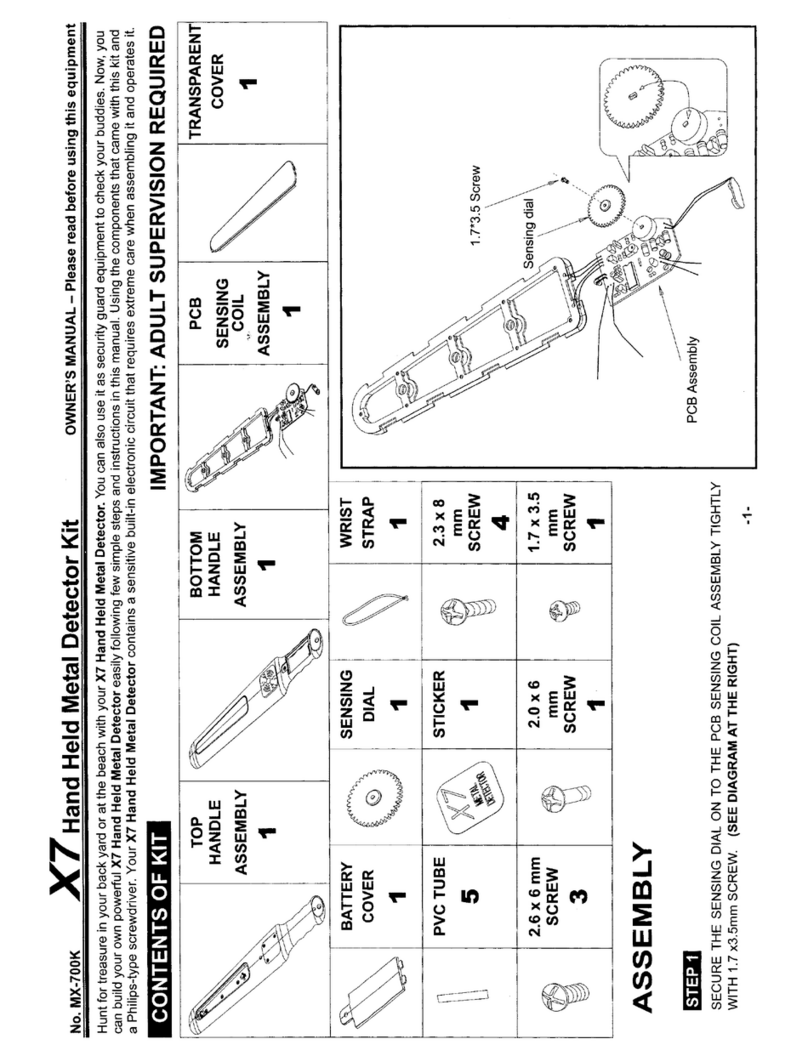
Elenco Electronics
Elenco Electronics MX-700K user guide
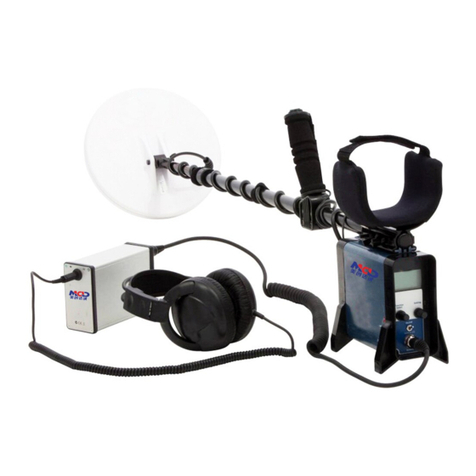
MCD
MCD MCD-5000B instruction manual
Bounty Hunter
Bounty Hunter Tracker II owner's manual
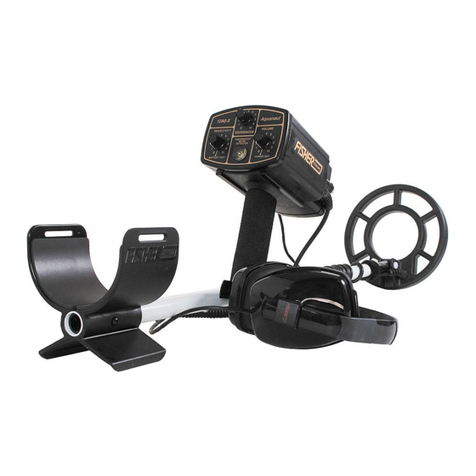
Fisher Labs
Fisher Labs 1280-X Aquanaut operating manual
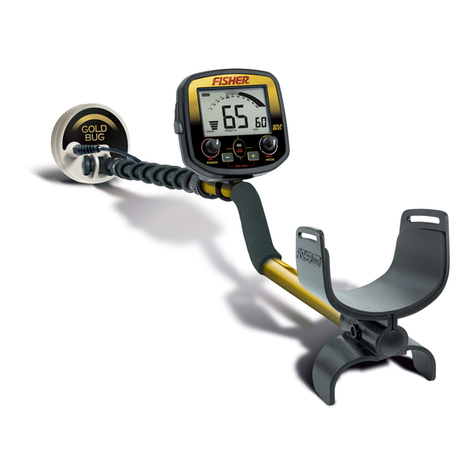
Fisher Research Labs
Fisher Research Labs Gold Bug owner's manual
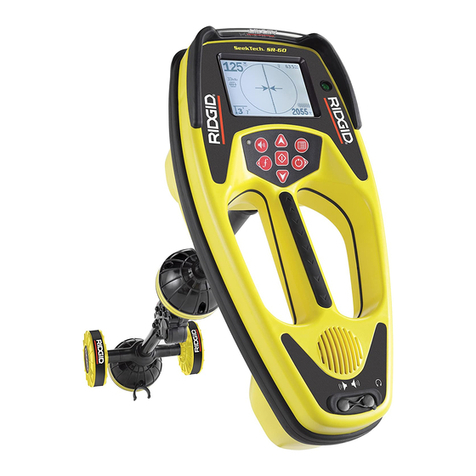
RIDGID
RIDGID SeekTech SR-60 Operator's manual

